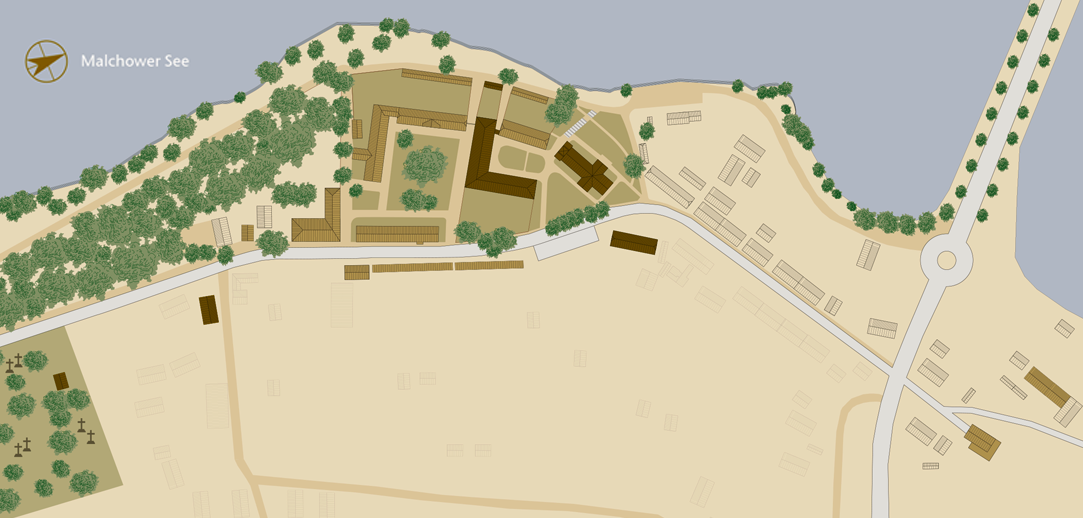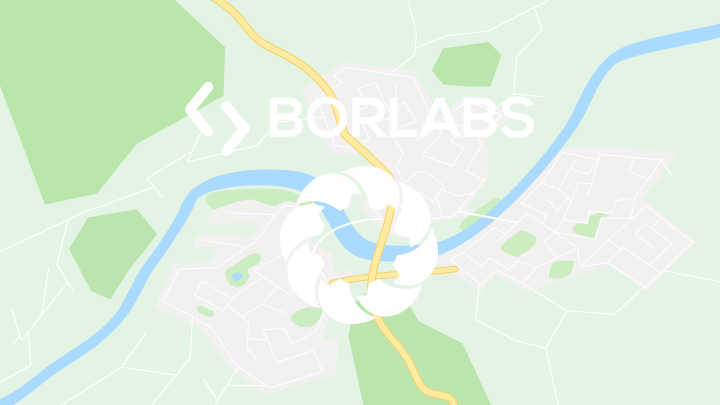
- Home
- 21_Monastery Cemetery
 Entrance gate to the Monastery Cemetery | these days
Entrance gate to the Monastery Cemetery | these days Entrance gate to the Monastery Cemetery | these days
Entrance gate to the Monastery Cemetery | these days Entrance gate to the Monastery Cemetery | these days
Entrance gate to the Monastery Cemetery | these days Tombstone in the Monastery Cemetery | these days
Tombstone in the Monastery Cemetery | these days Burial ground of the conventual nuns in the Monastery Cemetery | these days
Burial ground of the conventual nuns in the Monastery Cemetery | these days
The Monastery Cemetery
Malchow Monastery
Monastery Cemetery
SHOW THE TEXT
The monastery cemetery, which is protected under a historical buildings and monuments preservation order, was created in 1819 and is still in use today. Before the opening of the cemetery, burials had taken place in the vicinity of the monastery church, where the crypt of the conventual Carolina Dorothea Catharina von Rohr (1747-1826) is still preserved. These and three other historical grave slabs are now in the fish passage of the monastery next to the art museum.
A brick portal, built in three parts, forms the entrance to the monastery cemetery. Four pillars divide the portal into a wide main portal and two narrow side portals. The year 1844 can be read on the pillars. It falls within the creative period of the state master builder of Mecklenburg-Strelitz, Friedrich Wilhelm Buttel, who was working for the monastery at the time. The design for this portal is probably his. In the 1920s the cemetery was expanded. The end of the road was originally an avenue of lime trees, later a half-stone perforated brick wall. In the cemetery, the old network of paths has been laid out as a natural crossway and has been partially preserved. It is to be restored in the future, based on the historical model.
In the center of the cross is the classically styled chapel. The original design as a mortuary from 1819 was undertaken by the master bricklayer Riecken. Since there are now only few burials in the cemetery, and the funeral services take place in the monastery church, the chapel is no longer needed and is to be renovated for an alternative use.
The cemetery has old trees. The lime trees that were planted by the kitchen master Friedrich Wilhelm Jacob Engel (1787–1857) predominate. The visitor also notices a weeping beech and a strong oak. Three stately Weymouth pines and three yews are located in the area where the noble canonesses, – or conventuals – of the monastery are buried. The burial ground with the stone grave crosses of the conventual nuns can be found in the rear, south-eastern part of the cemetery. The cemetery also contains the graves of the residents of Malchow Monastery and the villages belonging to Malchow Monastery. The monastery officials were also buried here, such as the administrator Heinrich Franz Albrecht Engel (1824-1911), Karl Wilhelm Adolf Fritz Senst, known as the kitchen master (1860-1937), as well as the pastors working in the community of Malchow Monastery, such as church councilor Carl Friedrich Christian Schnell ( 1844-1923), Johannes Simon (1892-1967) and Arnold Paap (1911-1987).
Rudolf Gahlbeck (1895-1972), a well-known artist and famous son of the town, also found his last resting place in a family grave close to the chapel. His works are exhibited in the Art Museum in the wing of the monastery’s former refectory. In the grave complex of the von Bülow/von Roenne family there is a memorial stone for Colonel Freiherr Alexis von Roenne (1903-1944), who was executed for his complicity after the failed assassination attempt against Hitler on July 20, 1944. The monastery cemetery was left undisturbed for a long period of time. Extensive maintenance work has been carried out in recent years, so as to restore and maintain the original, park-like condition.
Monastery Cemetery
The monastery cemetery, which is protected under a historical buildings and monuments preservation order, was created in 1819 and is still in use today. Before the opening of the cemetery, burials had taken place in the vicinity of the monastery church, where the crypt of the conventual Carolina Dorothea Catharina von Rohr (1747-1826) is still preserved. These and three other historical grave slabs are now in the fish passage of the monastery next to the art museum.
SHOW THE WHOLE TEXT
A brick portal, built in three parts, forms the entrance to the monastery cemetery. Four pillars divide the portal into a wide main portal and two narrow side portals. The year 1844 can be read on the pillars. It falls within the creative period of the state master builder of Mecklenburg-Strelitz, Friedrich Wilhelm Buttel, who was working for the monastery at the time. The design for this portal is probably his. In the 1920s the cemetery was expanded. The end of the road was originally an avenue of lime trees, later a half-stone perforated brick wall. In the cemetery, the old network of paths has been laid out as a natural crossway and has been partially preserved. It is to be restored in the future, based on the historical model.
In the center of the cross is the classically styled chapel. The original design as a mortuary from 1819 was undertaken by the master bricklayer Riecken. Since there are now only few burials in the cemetery, and the funeral services take place in the monastery church, the chapel is no longer needed and is to be renovated for an alternative use.
The cemetery has old trees. The lime trees that were planted by the kitchen master Friedrich Wilhelm Jacob Engel (1787–1857) predominate. The visitor also notices a weeping beech and a strong oak. Three stately Weymouth pines and three yews are located in the area where the noble canonesses, – or conventuals – of the monastery are buried. The burial ground with the stone grave crosses of the conventual nuns can be found in the rear, south-eastern part of the cemetery. The cemetery also contains the graves of the residents of Malchow Monastery and the villages belonging to Malchow Monastery. The monastery officials were also buried here, such as the administrator Heinrich Franz Albrecht Engel (1824-1911), Karl Wilhelm Adolf Fritz Senst, known as the kitchen master (1860-1937), as well as the pastors working in the community of Malchow Monastery, such as church councilor Carl Friedrich Christian Schnell ( 1844-1923), Johannes Simon (1892-1967) and Arnold Paap (1911-1987).
Rudolf Gahlbeck (1895-1972), a well-known artist and famous son of the town, also found his last resting place in a family grave close to the chapel. His works are exhibited in the Art Museum in the wing of the monastery’s former refectory. In the grave complex of the von Bülow/von Roenne family there is a memorial stone for Colonel Freiherr Alexis von Roenne (1903-1944), who was executed for his complicity after the failed assassination attempt against Hitler on July 20, 1944. The monastery cemetery was left undisturbed for a long period of time. Extensive maintenance work has been carried out in recent years, so as to restore and maintain the original, park-like condition.


Embankment

Laundry

Hospital

Smithy

Bulwark and Promenade

Church

Parsonage

Cloister Courtyard

Refectory

Dormitory

Deaconess's house

Wall Garden

Ladies' Retreat

Terraced Houses 1

Kitchen Master’s House

Terraced Houses 2

Administration Building

Jail

Barn terraced houses
and farm yard

Engels Garden

Monastery Cemetery

Cemetery Chapel

Burial Ground of the Conventual

Cartwright's Workshop
SHOW ALL OBJECTS
Embankment
Laundry
Hospital
Monastery Smithy
Bulwark and Promenade
Monastery Church
Parsonage
Cloister Courtyard
Refectory
Dormitory
Deaconess's house
Wall Garden
Ladies' Retreat
Terraced Houses | 1
The Kitchen Master’s House
Terraced Houses | 2
Administration Building
Jail
Terraced stable houses and farmyard
Monastery Cemetery
Cemetery Chapel
Burial ground of the conventuals
Cartwright's Workshop
Exact location in Google Maps

Mit dem Laden der Karte akzeptieren Sie die Datenschutzerklärung von Google.
Mehr erfahren
